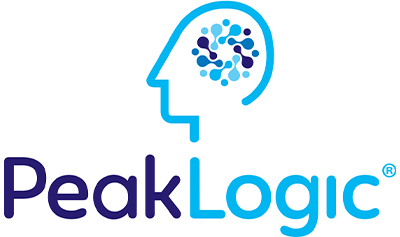Frequently Asked Questions About PrTMS®
ABOUT PrTMS®
What is TMS?
Transcranial magnetic stimulation (TMS) is a drug-free, non-invasive therapy. TMS treatment uses magnetic pulses to stimulate electrical activity in the brain’s neurons (nerve cells). TMS is also referred to as repetitive TMS (rTMS), because treatment typically includes the delivery of repetitive magnetic pulses. TMS has been cleared by the FDA for use in treating a limited number of conditions, including Major Depressive Disorder, Obsessive-Compulsive Disorder, and pain associated with certain migraine headaches.
What is PrTMS®?
- Personalized repetitive Transcranial Magnetic Stimulation (PrTMS®) is TMS — but with a smarter, more sophisticated approach. Unlike conventional TMS that is one-size-fits-all, PrTMS® intricately customizes the TMS therapy delivered to each patient – which may help patients achieve optimal results.
- PrTMS® uses brainwave analysis to measure brain activity and develop a customized therapy protocol for each patient’s unique brain mapping that is verified and approved by a qualified PrTMS® provider – this helps ensure patients receive optimized treatment.
How does PrTMS® work?
PrTMS® involves a 3-step process that includes evaluation of your brain function, creation of a personalized and provider-reviewed and verified treatment plan, and application of the TMS therapy using the treatment plan.
What’s unique about PrTMS®?
- With conventional TMS therapy, the same therapy is delivered to every patient — regardless of their condition, circumstance, or degree of brainwave frequency disturbance.
- PrTMS® is TMS — but with a smarter, more sophisticated approach. Unlike conventional TMS that is one-size-fits-all, PrTMS® intricately customizes the TMS therapy delivered to each patient.
- PrTMS® uses brainwave analysis to measure brain activity and develop a customized therapy protocol for each patient’s unique brain mapping.
Is this treatment FDA approved?
No. PrTMS® is a method of developing personalized treatment protocols for use with rTMS therapy, and is provided as part of a physician’s practice of medicine and in accordance with his or her medical judgment. PrTMS® is not a product and has not been evaluated by the FDA.
SAFETY
What are common side effects?
Common side effects may include headache, scalp discomfort at the site of stimulation and lightheadedness. If there are side effects, they are generally mild and to moderate and improve shortly after an individual session and decrease over time with additional sessions. In addition, hypoglycemia has been noted in some patients. Serious side effects, though uncommon, also may occur.
ELIGIBILITY
Can children receive PrTMS®?
PrTMS® practitioners have treated children with PrTMS®, but you should talk with your child’s doctor to see if PrTMS® may be right for them.
Can I undergo treatment if I am pregnant?
In certain circumstances, PrTMS® can be applied during pregnancy. Talk to your doctor to see if TMS is right for you if you are pregnant.
Am I qualified for PrTMS®?
PrTMS® has been used in patients with a wide variety of conditions, including those that may not have responded to medication in the past. Talk to your doctor to see if PrTMS® is right for you.
Is everyone a candidate for treatment?
No. Patients with aneurysm clips, stents in the neck or brain, brain monitoring electrodes, deep brain stimulators, or any form of metal in the head or on the face are not eligible for treatment. Patients with a history of bipolar disorder, schizotypal disorder, seizure disorder, or who have been prescribed anti-psychotic medications in the past should generally not undergo treatment.
GETTING STARTED
What is my first step to get treatment?
Find a doctor who is trained in PrTMS®. Then, schedule an initial assessment to begin the process and determine next steps for your treatment.
What kind of diagnostic testing is completed?
- The first step of PrTMS® is to evaluate and map your brain function. An EEG recording will be taken to measure your brain activity. The EEG device is wireless, involves no gels, and can take a recording in less than 5 minutes – compared to conventional methods, which can require several hours. This provides an objective, quantitative look at brain function
- In addition to the EEG, you will be given a patient neurocognitive questionnaire. Your responses provide subjective, qualitative inputs that — along with the EEG data — form a complete picture of your brain health.
How long will my assessment appointment be?
You can expect the initial appointment to take about 1 hour.
Can I complete diagnostic testing and begin my treatment plan while on my regularly prescribed medications?
Yes, you can continue to take regularly prescribed medications. Decisions to stop taking medications during the course of treatment should be made with your doctor.
Do I need to refrain from recreational drug use and consuming alcohol while undergoing treatment?
To obtain maximum benefits, it is recommended to limit or stop any recreational drug and alcohol use.
WHAT TO EXPECT
How often do I complete treatments?
An initial treatment plan consists of treatment 5 days a week, for a period of 4 to 6 weeks. After the initial treatment period, maintenance sessions can be scheduled according to how you feel and your doctor’s clinical judgment.
How many treatments will I need to complete in total?
Your brain function will be measured weekly and the treatment plan will be modified based on the data collected. The total number of treatments varies from patient to patient. An initial treatment plan typically consists of 20 to 30 sessions. Frequency of maintenance sessions depends on your unique circumstances.
How often do I undergo diagnostic testing?
Diagnostic testing is generally done every 5 treatments, or about once per week. The ongoing diagnostic testing adds very little time to your appointment and is crucial to ensure that you are receiving the best treatment possible.
How often do I see the physician?
This varies from patient to patient. You will not have to see your physician every time, as a trained medical professional, such as a nurse, can administer the PrTMS® therapy protocol, which will have been approved and verified by the qualified PrTMS® physician.
Who will be performing my treatments?
A trained medical professional will perform your PrTMS® treatments.
What will my treatment feel like? Will it hurt?
Many patients describe treatment as sounding or feeling like a light tapping. Most patients do not consider this to be an uncomfortable feeling.
How long are treatment appointments?
Treatment appointments usually last for approximately 45 minutes.
INSURANCE
Does insurance cover PrTMS®?
Your insurance may cover the cost of some of your PrTMS® treatment. Speak with the staff at your practice and your insurance company to determine what coverage you may have.
What are the fees for patients paying cash (not using insurance)?
Fees for cash patients vary by practice. Reach out to the clinic providing the PrTMS® treatment for more information.

